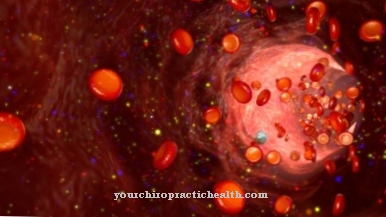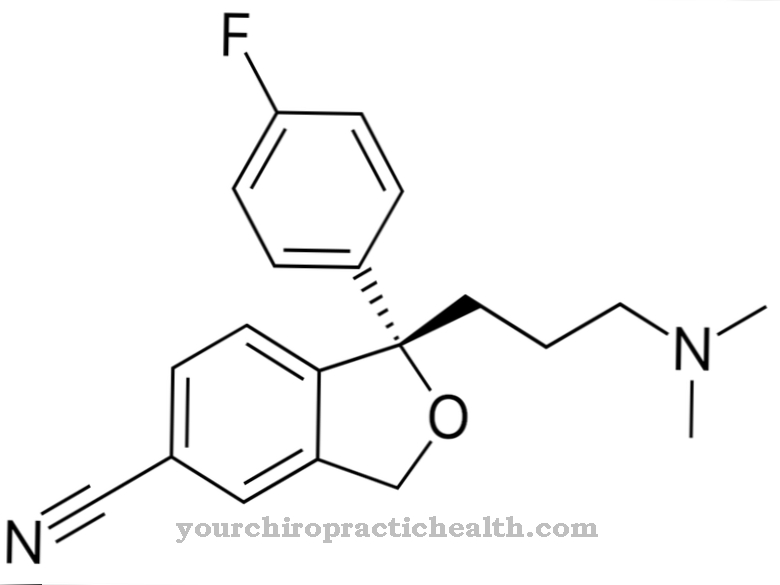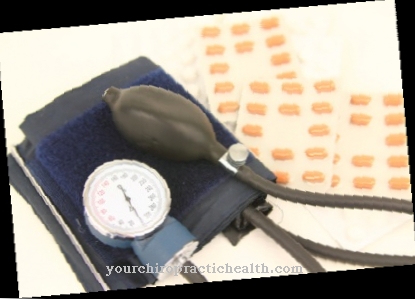At Tilidine it is a pain reliever. It is one of the opioids.
What is tilidine?

Tilidine belongs to the group of opioid analgesics. Opioids have pain relieving properties. However, they have the disadvantage that they pose a potential risk of dependency. In order to counteract such a dependency and undesirable side effects, there is usually a combination between tilidine and its counterpart naloxone.
The development of the synthetic drug tilidine took place at the end of the 1960s by the German pharmaceutical company Gödecke, which is now part of the Pfizer group. Initially, the active ingredient was brought onto the market in the form of drops. The drops made it easier to dose the painkiller.
However, over time it turned out that tilidine can induce dependency in patients. Because of this, the drug was no longer used in people who were addicted to drugs. Finally, to prevent the risk of addiction, naloxone was added. Naloxone, for example, is an opioid antagonist that cancels the effect of the opioids. It has the ability to bind to the same receptors as tilidine, but without triggering a corresponding effect. In this way, naloxone is also suitable for treating opiate poisoning.
Pharmacological effect
Tilidine works by activating the opioid receptors within the organism. The body's own endorphins, which also act as pain relievers, also bind to these receptors. Due to the activation of the receptors by tilidine, there is an indirect inhibition of the neural systems from which pain is transmitted in the body.
It takes about 15 minutes for tilidine's analgesic effects to kick in. During this period, the active ingredient is converted into nortilidine within the liver, which is actually responsible for the drug's pain-relieving effect. Tilidine works for about 3 to 5 hours.
Tilidine not only relieves pain, but also influences how it is perceived. Because of this, the patient feels pain less intensely and is put in a more positive mood. The mode of action of tilidine is similar to morphine, which is the most important representative of the opioids.
The combination of tilidine and naloxone is intended to prevent the abuse of the pain reliever by using too high a dose or by injecting it into the arm. The active ingredient combination can only develop its positive properties when it reaches the gastrointestinal tract via drops, capsules or tablets. In the stomach, naloxone is largely inactivated, so that only the effect of tilidine remains. In the case of an injection in the arm, as is often the case with drug addicts, the euphoric effect of tilidine does not occur, since this property is suppressed by naloxone.
Medical application & use
Tilidine is used to treat moderate to severe pain. The period of use is limited in order to avoid getting used to the opioid, but this is not always possible. In particular, people who suffer from chronic pain are often dependent on tilidine for a long time.
The most common indications for tilidine include cancer pain, pain after surgery, pain after an accident and pain after a heart attack. The active ingredient is also suitable for the treatment of inflammatory rheumatic diseases. It can also make sense to take tilidine as a preventative measure if severe pain is to be expected.
In Germany, tilidine is taken through prolonged-release tablets and drops, as well as in combination with naloxone. In this combination, the pain reliever does not fall under the Narcotics Prescription Ordinance (BtMVV) in this country, as this way the potential for dependence and abuse can be prevented.
However, the BtMVV has been in force since 2013 for tilidine preparations in which the active ingredient is released immediately. The combination of tilidine + naloxone is also available as a generic. Since Tilidine is subject to prescription, it can only be obtained through a special medical BTM prescription.
You can find your medication here
➔ Medicines for painRisks & side effects
Taking Tilidine can have various side effects. When using prolonged-release tablets, nausea and vomiting often occur. In some cases, drowsiness, tiredness, dizziness, headache, increased sweating, abdominal pain and diarrhea are possible. Nausea, vomiting, drowsiness and dizziness may also occur when taking drops.
The undesirable side effects are particularly evident at the beginning of therapy. However, the longer the treatment, the greater the decrease in the side effects. To prevent side effects, the patient is advised to avoid physical strain.
Tilidine must not be taken in the first place in the event of hypersensitivity to the active ingredient. People who are dependent on opiates also have to do without tilidine + naloxone, as the naloxone can cause serious withdrawal symptoms. Other contraindications to tilidine are liver dysfunction and liver cirrhosis.
Tilidine should only be taken during pregnancy and breastfeeding after the doctor has carefully weighed the risks and benefits. Tilidin is suitable for children from the age of two.
Taking Tilidine at the same time as sedatives or alcohol can increase the effect of the pain reliever. There is even a risk of respiratory failure.Because the interactions are difficult to assess, the simultaneous administration of tilidine and other opioids should be avoided.



























